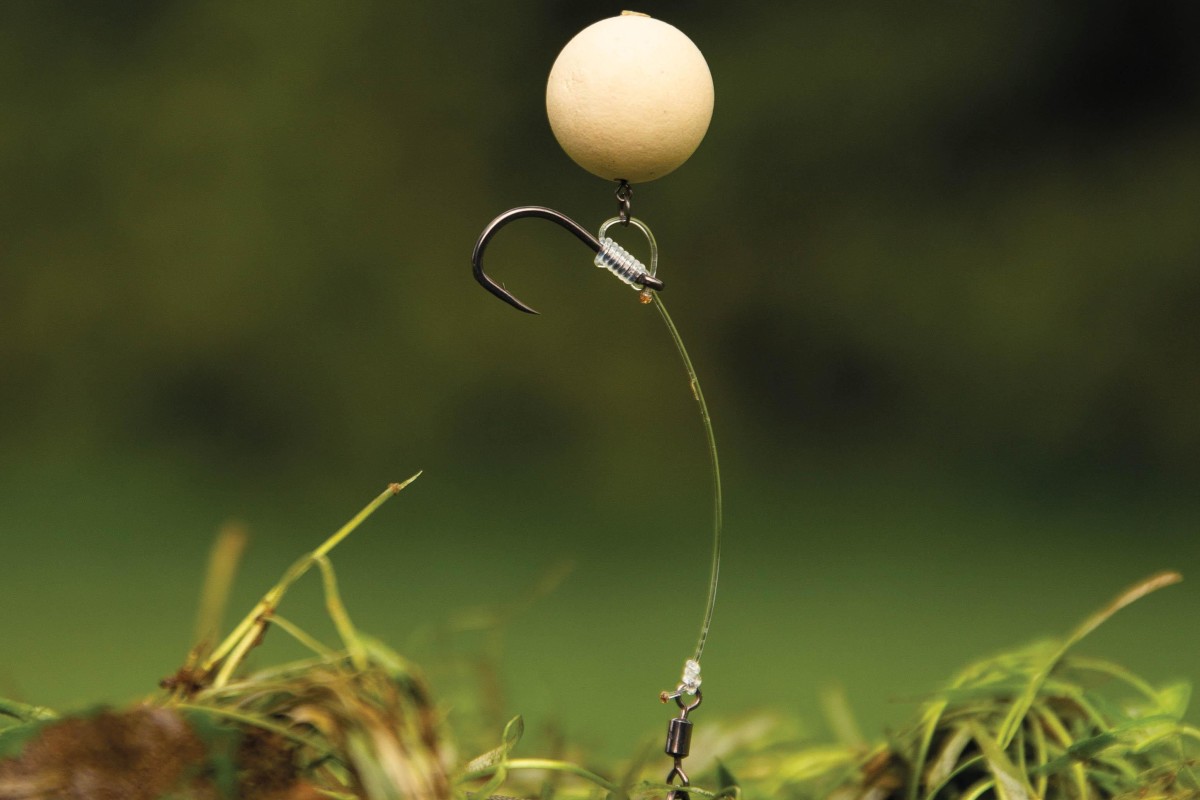
A Chod Renaissance
There’s so much more to the Chod Rig than some might have you believe, and Lewis Read is just the person to extol its numerous virtues…
It is an unequivocal fact that the Chod Rig, along with its myriad of variants, offers us a remarkable capacity to present a hookbait effectively, in circumstances that could utterly ruin any chance of catching a carp on a conventional-style rig and lead arrangement.
A GAME-CHANGING MOMENT: Suddenly safe areas opened up…
Whilst paternosters in numerous guises have been documented, and used in angling since the dawn of time (in an angling context), the rig evolved massively when Tel took the Short Rig and added the Hinged Stiff Rig hook section to a long, leadcore leader. Sometimes, such an epiphany has long-reaching and profound consequences,
and in this specific case, it created a chain reaction that is still shaping many anglers’ approach to their angling to this very day, well over 20 years later.
The rig essentially allows you to fish a slow-settling hookbait effectively, over almost any substrate, such as dirty detritus or most weed features; it’s really that simple. Consequently, weeded areas that previously remained safe zones for carp suddenly opened, and any fish that could be seen browsing over the weed, picking at snails, sucking on invertebrates, and even eating anglers’ bait (sometimes), could be targeted far more effectively than ever before.
In recent years, it’s been a presentation which many anglers have drifted away from, not through any sketchy issues of ineffectuality, just the rotation of angling fashions and a slightly sad, popularist perception that ‘Chods are for nods’ (a moniker apparently being applied by some to Ronnie- and Spinner-Rig protagonists too!), when I would proudly counter that the opposite is true. A far truer reflection would be that it still fulfils a totally unique role in our rig armoury, and as such, is just as valid today as ever, and possibly more so, if you take the effects of eutrophication into account.
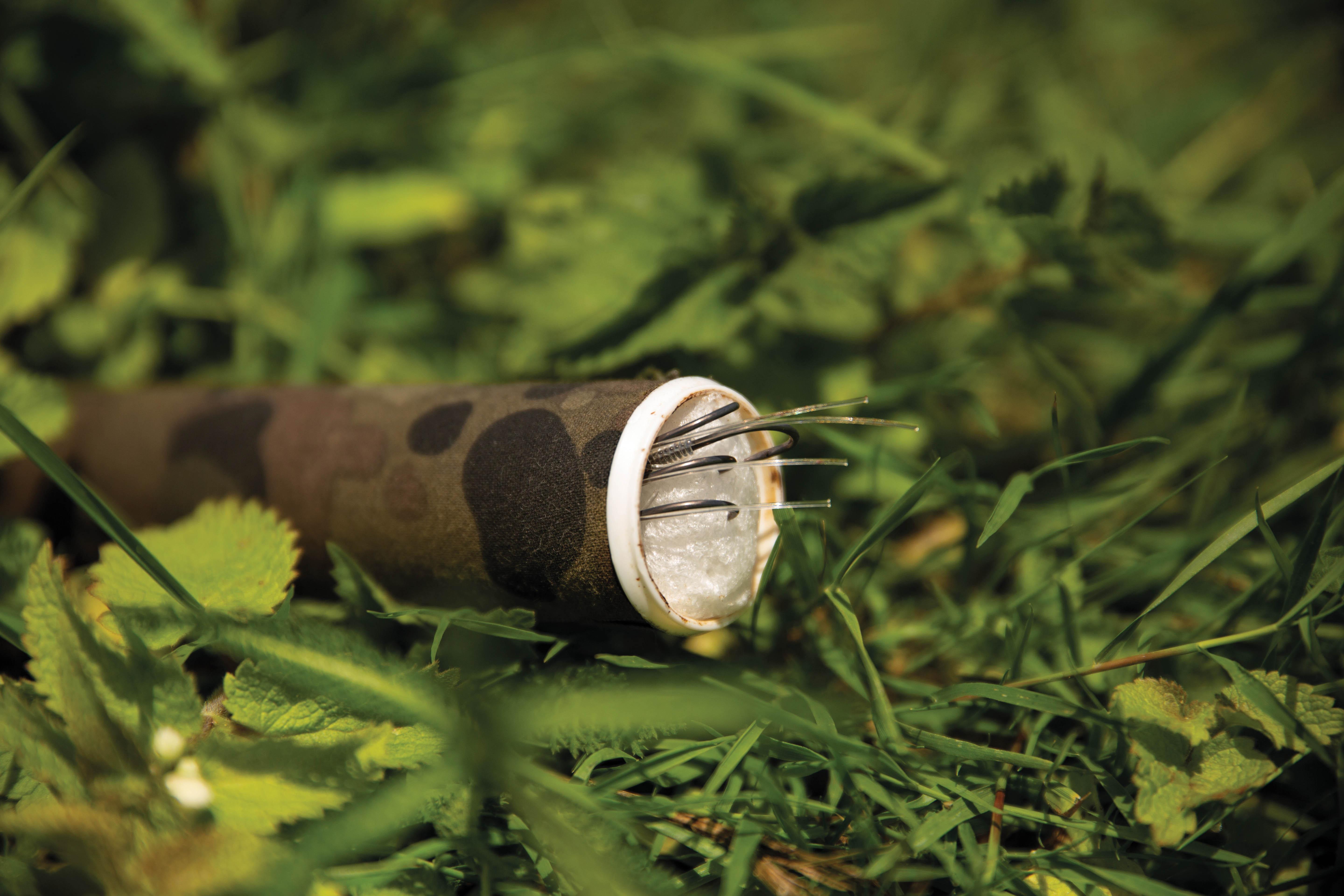
A QUICK OVERVIEW: Why it works so well
As a basic description then, the classic Chod Rig utilises a pop-up which is allowed to run up the line or leader a predetermined distance, this being dictated by the position of the top bead. During the cast, as the rig travels through the air, the hookbait invariably flies up the leader or line until it abuts the stop. Obviously, even if the sudden deceleration as the lead hits the surface forces the rig to fly someway back towards the lead, as the lead plummets down through the water column, the water pressure soon returns the rig right up to the stop.
ALL IN THE DETAIL: It’s the 1%s that make the difference
As with any relatively complex carp-rig arrangement, the devil, as they say, is in the detail! The ideal hook section is well documented, and if you want a good idea of how best to tie it, just look at Hinged Stiff Rig articles—‘God’s Rig’ in this series would do for guidance on the recommended hooks, ‘D’s and materials, if you want to fish it in the classic format.
Just like the Hinged Stiff Rig, the pop-up hookbait needs to offer the right buoyancy; but what is right? In the context of minimum buoyancy, the simplest test is to hold the leader vertically in the water—the hookbait should be buoyant enough to comfortably lift the whole of the Chod Rig, including the swivel, up the leader until it either hits the top stop or bobs up at the surface.
If you’re leaving the rigs out for a while, it’s indisputably best practice to use pukka hookbaits which retain their buoyancy for long periods. Just like the Hinged Stiff Rig, if the hookbait does not hold the pop-up section vertically, it cannot rotate freely, and will inevitably cause the occasional hook-pull, because the rotational movement of hook section was inhibited due to a ‘gangster lean’.
Conversely—or should that be perversely?—the next job is to check that it is not too buoyant. If you are using a long length of leadcore, it will need to be a bloody buoyant hookbait—and you’ll need to make sure that the hookbait does not lift the leader noticeably off the lakebed. Obviously, if you’re fishing over weed, excessive buoyancy is less of a problem than if you were fishing a Choddy over a relatively weedy bottom—perhaps in a see-a-fish-and-chuck-a-rig-at-it angling situation, for which the rig excels.
Of course, despite the massive advantages of leadcore when used with leaders up to five- or six-feet long, some fisheries apply a strict no-leadcore rule, in which case, the rig needs to be balanced with rig putty molded around the top eye of whatever swivel you choose, so that the Chod settles gently under the weight of the lead-free leader, or as the line bellies down whilst fishing the rig ‘naked’.
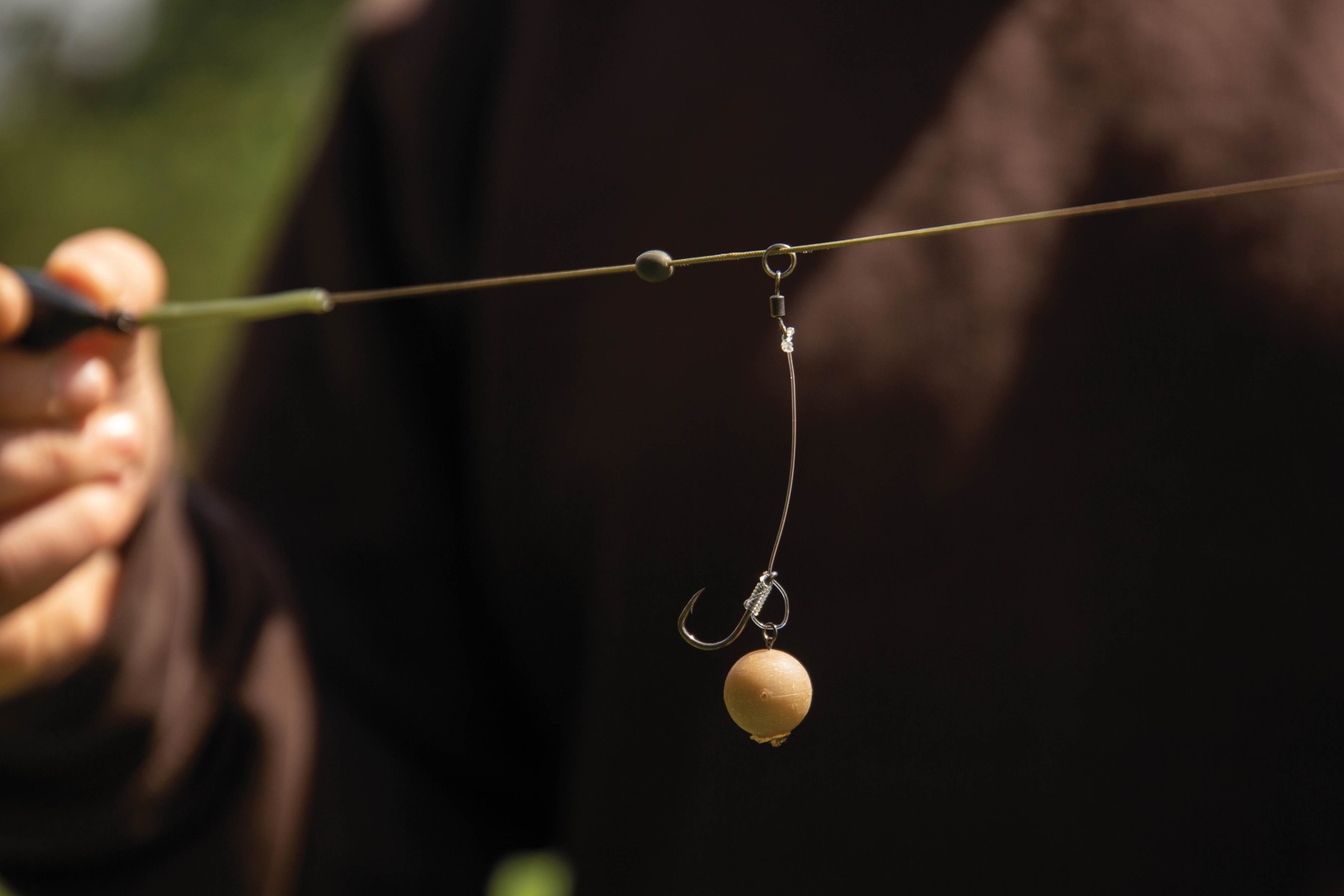
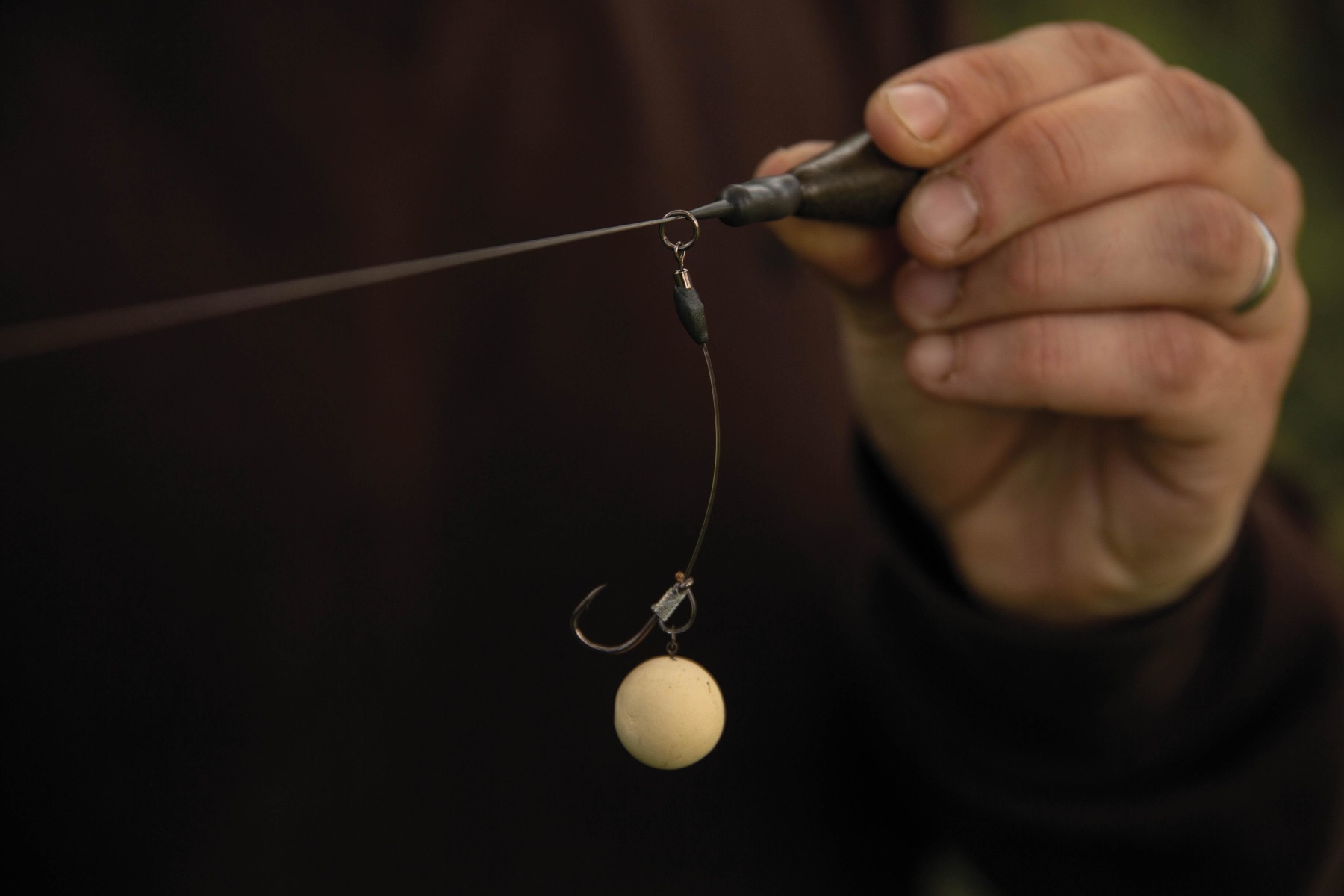
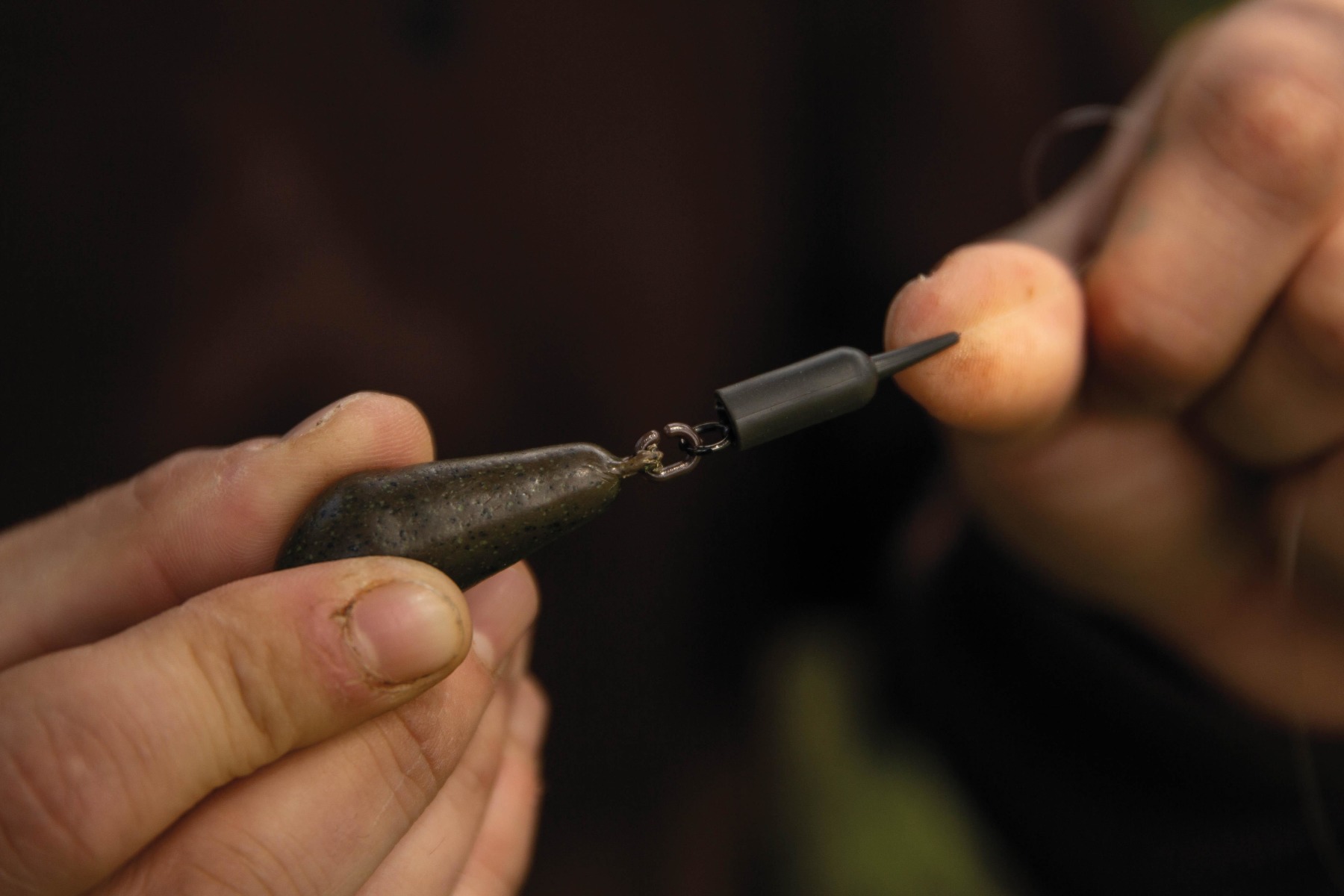
OTHER VARIANTS: The 4x4 of carp rigs
Super-long running Chods are another subtle variant which I will mention now, as these set-ups can benefit enormously from a lead-free, and naked arrangement, and it is really quite logical why. Imagine you cast a long, leadcore leader into high weed with the stop set around eight feet up. That is a lot of weight trying to pull the rig down into the weed—as the lovely heavy leadcore tries to do its job and bellies down. The naked and lead-free options avoid this issue as they settle and balance far more gently, and you just have to balance the Chod correctly with the addition of a bit of rig putty.
Whilst we are on the topic of fishing the naked Chod—which coincidentally means that the rig is mounted on the main line, rather than a leader—the rig really requires some kind of buffer just above the lead to ensure that it will withstand the sheer (cutting) forces created by the ring swivel pulling against the line as you play carp in.
This is particularly pertinent if you are using copolymer line. Ideally, this can be a very short section of spliced leader tied on the end of the main line to act as a buffer, or a specialist product like our Thinking Anglers C-Clip Naked Buffer Bead. Leaving the ring swivel to run on copolymer main line is like playing Russian roulette. Even with good old rope that is 0.40mm copolymer, you are risking being cut off by the swivel. Denser molecular structure is afforded by pure fluorocarbon lines. Please note this advice does not apply to hybrid fluorocarbon lines, which are generally a bit pap.
Whilst 100 per cent PVDF fluoros offer a much greater resilience to damage from the swivel, it’s still safe to go thick.
*Anyone who has been had been unlucky enough to be stuck, listening to me droning on about lines at one of the winter shows, will have probably heard me say that ‘diameter is king’ when it comes to sheer resistance of any lines, leader or hooklink. Extrapolate that in this application, and the same is certainly still true.
LAYING DOWN YOUR LINE: It plays a big role
Fluorocarbon main lines offers another big advantage with long, flowing Chods, in that as the main line settles on top of the weed, it effectively—and gently—locks the Chod arrangement in place, giving the dual advantages of stopping the leader from bellying back, whilst also being as flush to the top of the weed as it can be.
Even with a rig that presents almost anywhere, inevitably, there are ways to get the most out of it. After checking that the hookbait has the correct buoyancy—and of course, checking that the hook is ‘razor’—another major consideration that will allow you to get the most from the rig is being mindful of how you sink the line after the rig has gone out. Certainly in weedy situations, sinking the line is much like making love to a beautiful woman, in that it’s best done with everything wet, and with your rod dipped, gently teasing it down—essentially, if you pull too hard whilst you’re sinking the line, you run the real risk of pulling the hookbait down into the fronds of weed.
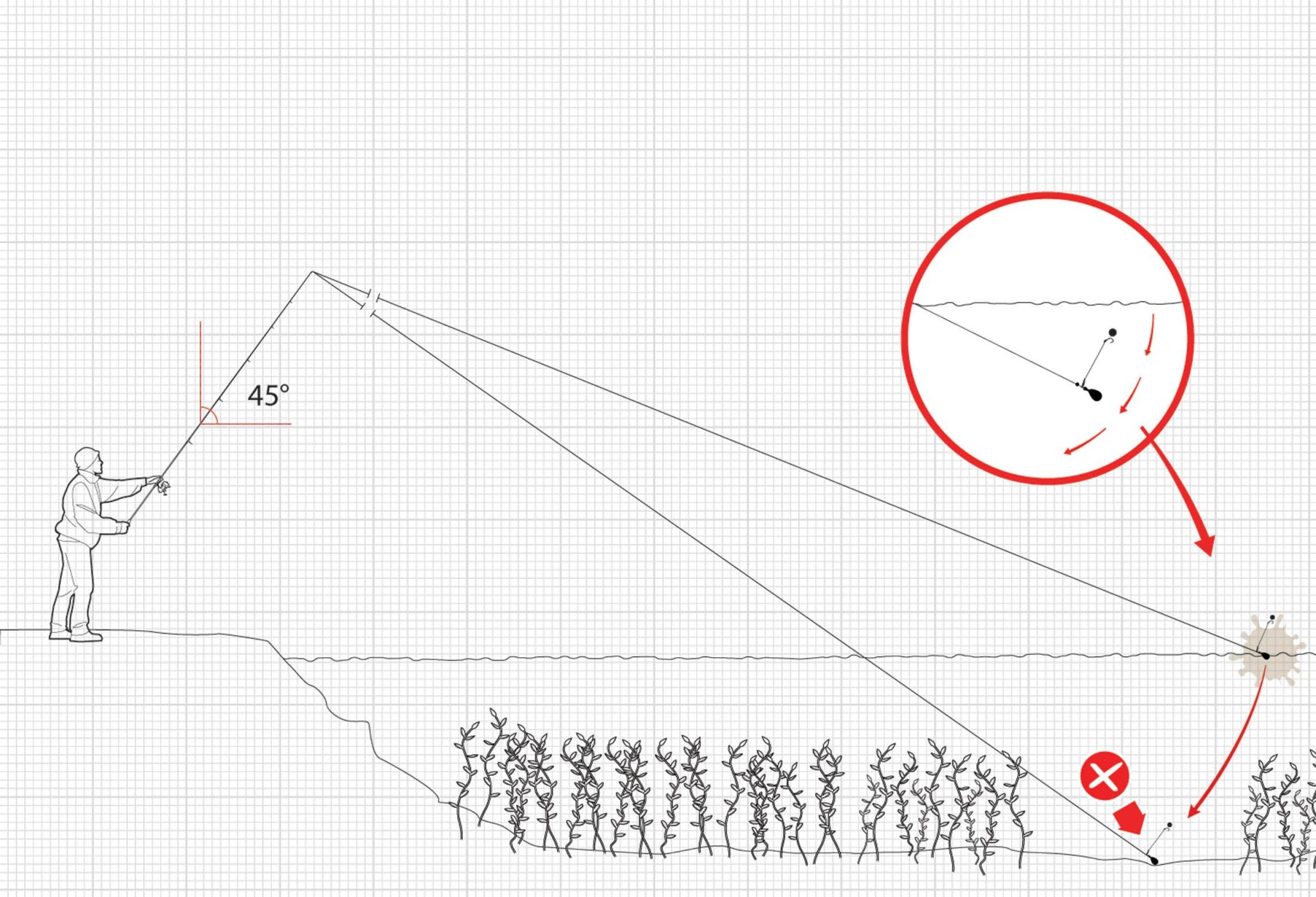
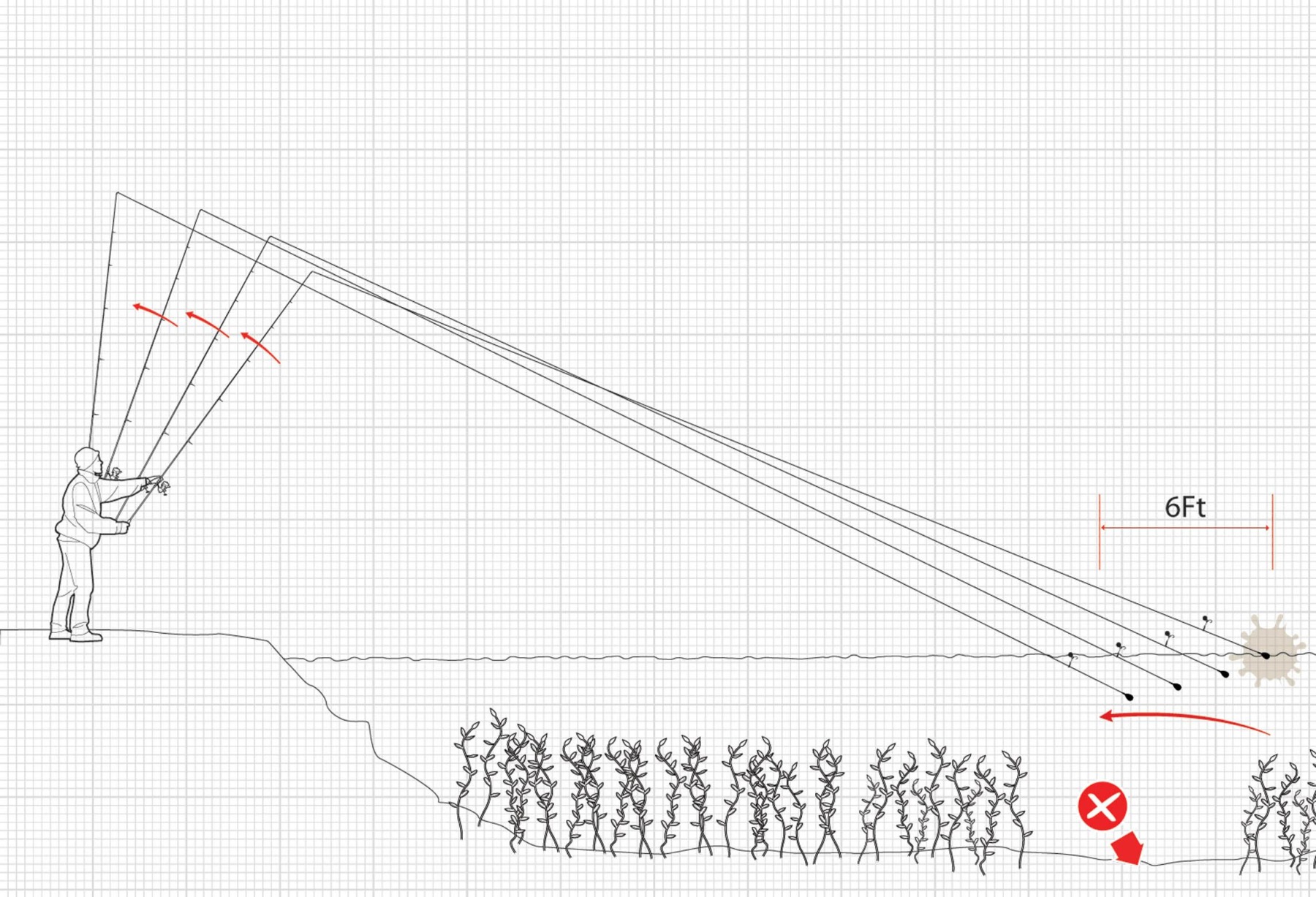
Unless you’re pretty sure of your line-lay whilst fishing Chods over very low weed or across to a plateau, it’s also another best-practice recommendation to fish small bobbins on long drops. Bite indication is rarely impaired, but interpretation of bites needs to be fine-tuned, as they can be odd affairs. They can be twitchy, but are generally easily separated from liners as they are bouncy and eventually hold up tight—though it is better to take control of a fish in weed before this juncture!
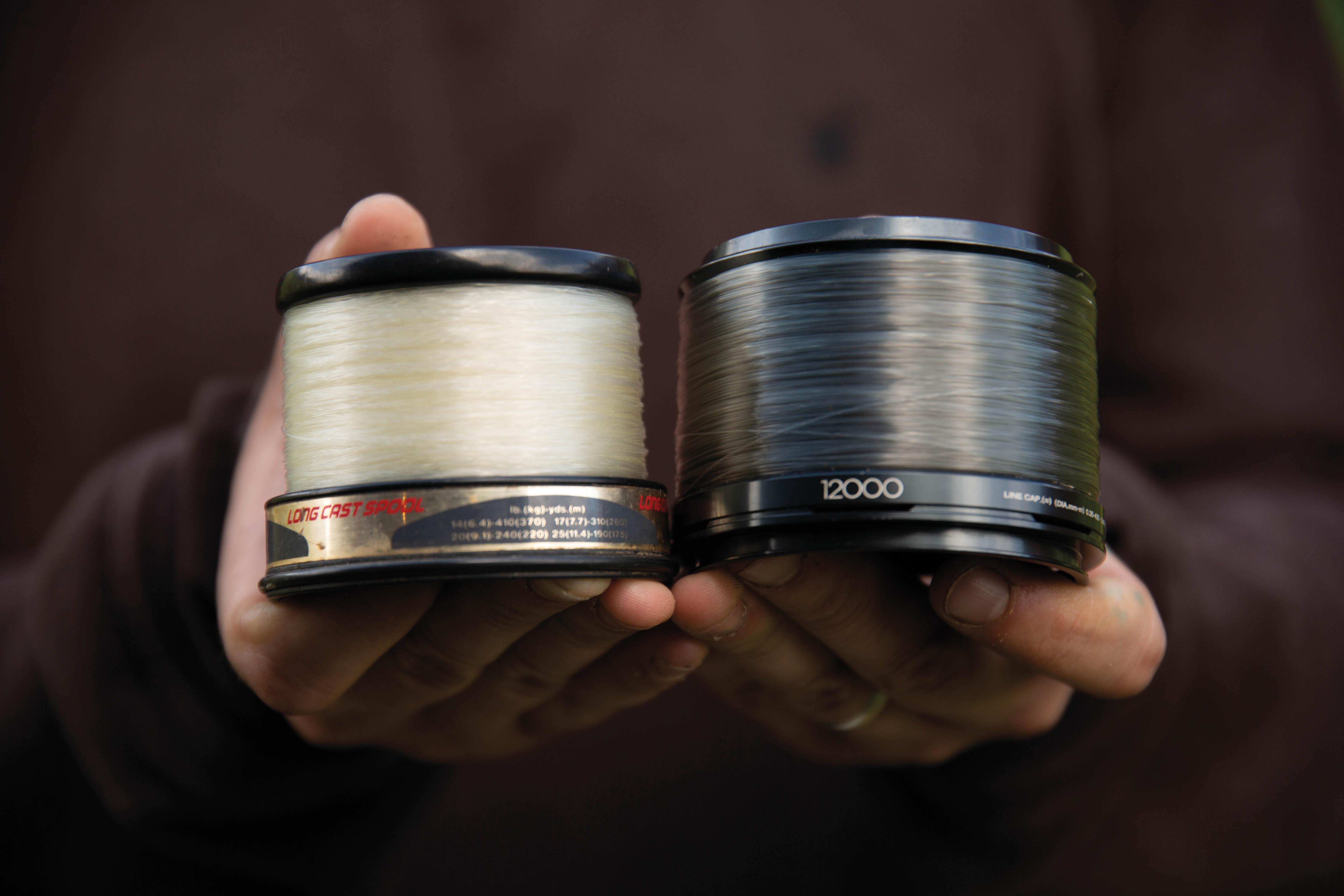
THE STANDOUT VARIANT: The weedanoster
More experienced anglers will inevitably have their own favourite way of tying the rig, and several variants have evolved as thinking anglers adjust the terminal arrangement to suit the specific angling situations they face.
To my mind, the standout variant would be the ‘weedanoster’. This is an adapted version which relies upon a long, weak lead link—normally 3 to 4lb line—tied to a trimmed-down version of the Chod-heli arrangement. Whilst it appears to be a minor mutation, the real magic happens when you replace the pop-up with a balanced hookbait on a slightly longer hooklink—a wafter or corked nut are ideal.
The lack of (leader) weight down below the hookbait just allows the balanced hookbait to settle and remain in position on top of weed, and if you see fish wising up to the pop-up arrangement, the weedanoster and balanced hookbaits can reinvigorate the effectiveness of the rig, as the hookbait presentation is much more subtle.
Obviously, the weak link on this version is designed to break on the bite, but what about concerns about rig safety with Chod Rigs generally, and the slightly contentious matter of losing leads on these lead arrangements? To my mind, the factors that really need to be considered are the balance between the risk of the lead catching catastrophically in thick weed, against the chance of a rig being cut off whilst you are playing a fish and after the lead has discharged. It’s a personal assessment, but my own slightly pragmatic take on it is simple: use the beefiest main line you can, and this in itself will drastically reduce the chances of this happening.
So many issues related to rig safety would be fixed if anglers remembered Walker’s common-sense doctrine of using tackle which offers you the greatest chance of successfully landing the fish you hook. In this case, in relation to main line, ‘manimal’ is certainly the right choice!
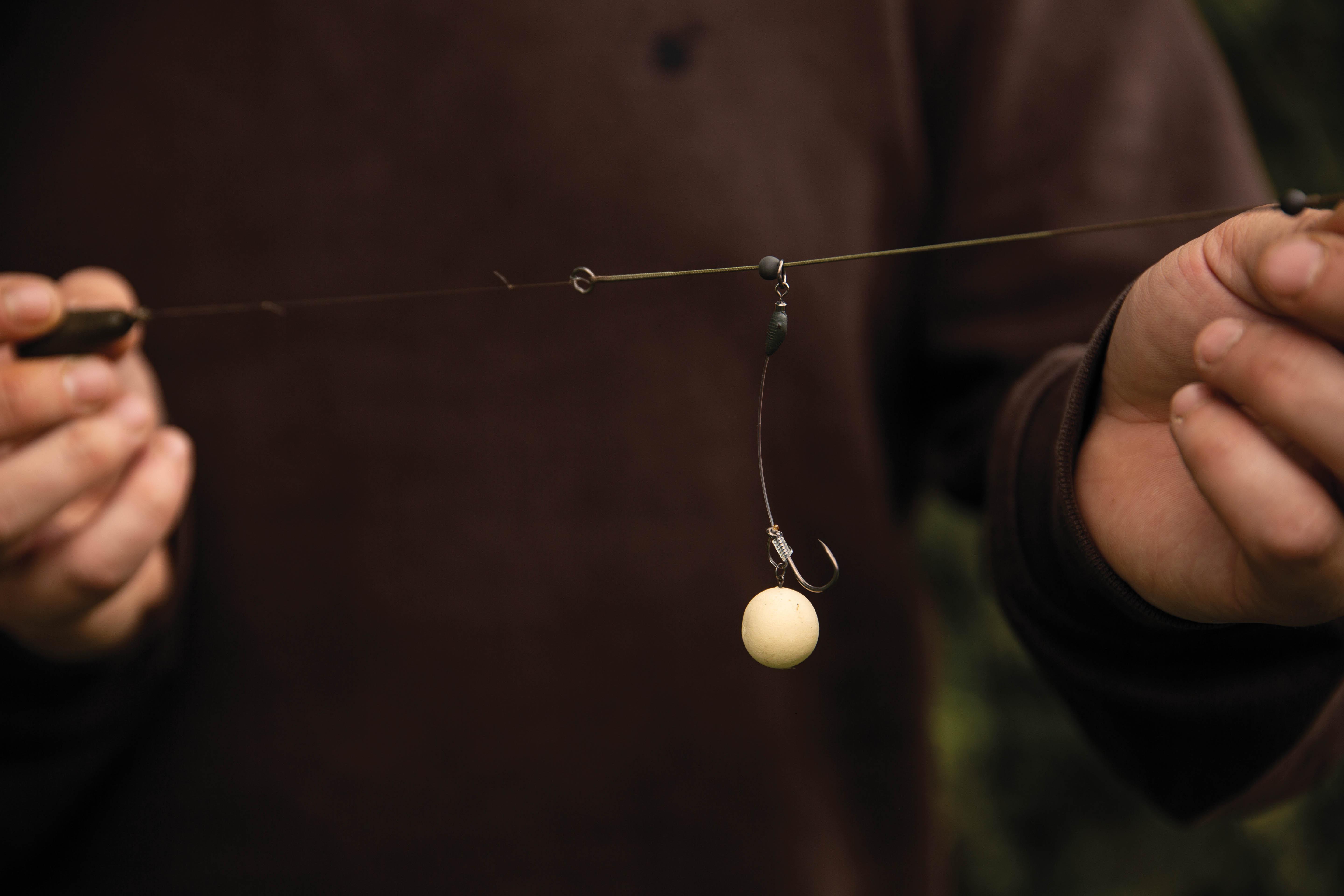
THE 4X4 PRESENTATION: It can be chucked anywhere
So there you have it. The Chod really is the 4x4 presentation with no equal, whose application far exceeds a rig to be chucked in a weedbed. It’s a versatile group of awesome presentations, which can be tailored to work in a broad set of angling situations. If that doesn’t deserve the time of day, I don’t know what does…



